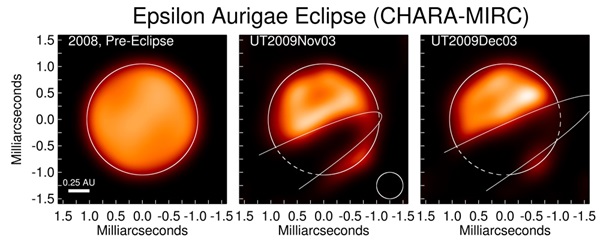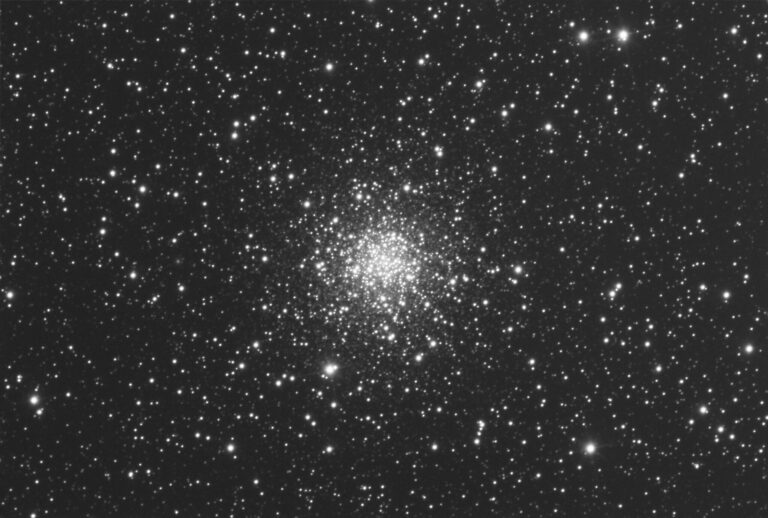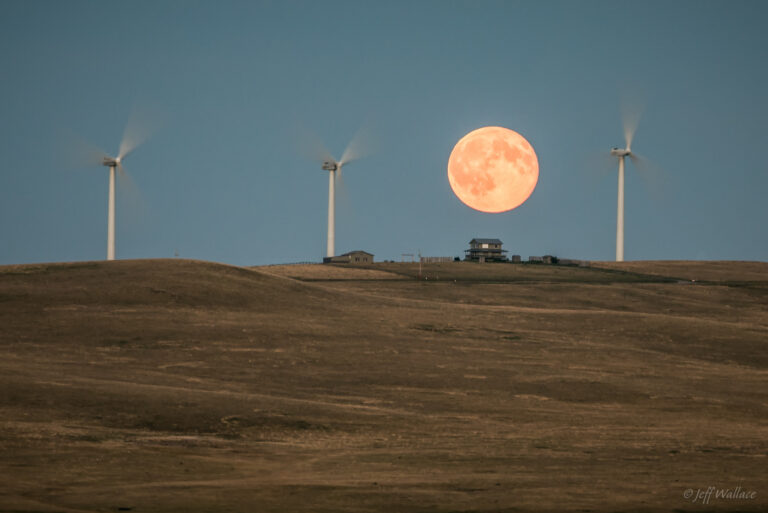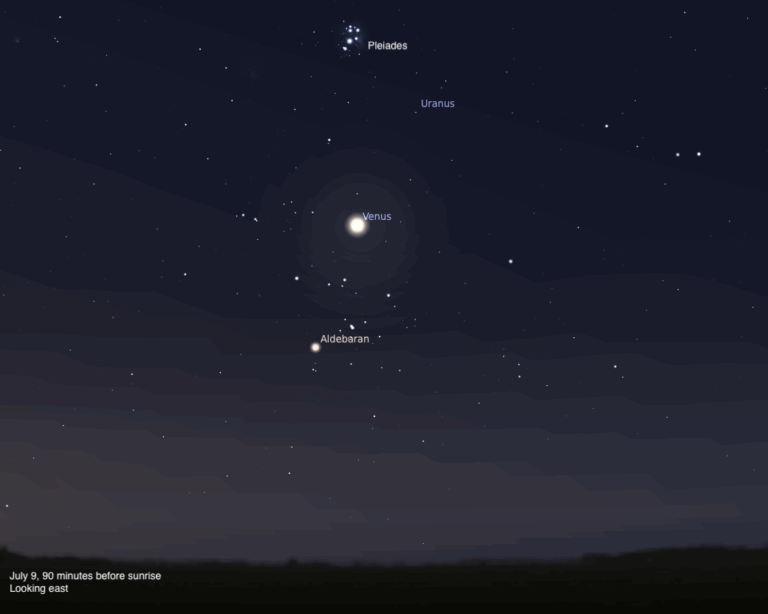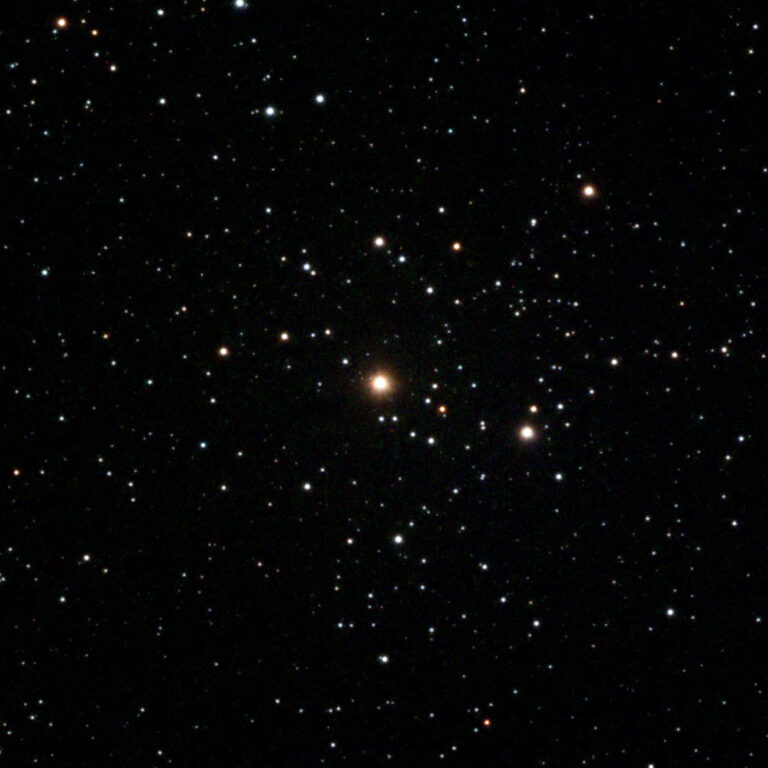Key Takeaways:
For the first time, a team of astronomers has imaged the eclipse of the star Epsilon Aurigae by its mysterious, less luminous companion star. Scientists have known since 1821 that Epsilon Aurigae is an eclipsing double star system, but astronomers have struggled for many decades trying to decipher the clues as to what is causing the eclipses, which happen every 27 years. The new image largely settles the matter — the eclipse is caused by a disk of material, probably similar to the state of our solar system 4.5 billion years ago as the planets began to form around our own infant Sun.
Seeing this eclipse in detail has only now become possible. “Having studied this star on and off since my postdoctoral days in the 1980s during its last eclipse,” said Robert Stencel from the University of Denver, “it is very satisfying to finally resolve some of the long-standing questions associated with this famous star.”
The image was obtained using the interferometric technique, an old idea that incorporates computer control and laser connections among multiple telescopes to achieve a signal equivalent to one giant telescope.
“To capture the detail on Epsilon Aurigae, we’ve made use of the biggest optical telescope on Earth, the 1,083-foot (330 meters) diameter CHARA Array atop Mount Wilson, California,” said Stencel. To comprehend its size, note that 328 feet (100 meters) is roughly the length of a football field.
The CHARA Array is a collection of six telescopes, spread out over the grounds of Mount Wilson Observatory, in which individual beams of light are brought together using extraordinarily precise beam combiners to synthesize a giant telescope hundreds of meters across. In routine operations since 2005, the CHARA Array has already produced a number of astronomical “firsts” through its ability to produce images of unprecedented resolution.
“The size of Epsilon Aurigae in these amazing new images is equivalent to the angular size of an 11-point font letter ‘o’ seen from a distance of more than 93 miles (150 kilometers),” said Harold McAlister, CHARA director.
Key to the imaging success of the CHARA Array is the Michigan Infrared Combiner (MIRC). MIRC enables the type of multi-telescope linkage that is required to produce such images and enables more of the potential of CHARA to be used in parallel for image reconstruction. The combination of MIRC at CHARA has already produced the first image made of a normal star, other than the Sun, as well as the first images of a double star system in which one component is shedding matter to its companion star.
The images of Epsilon Aurigae show the intrusion of an apparently wedge-shaped structure across the face of a huge star, nearly 150 times the size of our Sun. The images of the star and wedge-shaped structure show the direct motion over a month, yielding a measurement of the relative masses of the components. The primary star itself is thought to be in a very interesting phase of its own evolution, turning out to be less massive than the eclipsing disk and the star hidden at the center of that disk.
Independently, Stencel and collaborators from the California Institute of Technology and Kitt Peak National Observatory have assembled data to show the disk contains a large, hot star known as a B5V object, describing its mass and temperature. This prior work set the stage to then evaluate the mass of the disk itself based on the CHARA images.
It turns out the disk is as wide as the orbit of Jupiter, nearly as tall as the orbit of Earth, but contains a little less than the mass of Earth. “This is a fairly direct measurement of characteristics of a disk in contrast to the usual disk studies where indirect evidence and lots of assumptions are the only means of characterization available,” Stencel said. “With some luck, we can obtain more CHARA images this year and develop the equivalent of an MRI scan of the entire disk through eclipse,” said Stencel.
Because astronomers haven’t observed much light from the faint companion, the prevailing opinion labeled it a smaller star orbited edge-on by a thick disk of dust. The theory held that the disk’s orbit must be in precisely the same plane as the dark object’s orbit around the brighter star, and all of this had to be occurring in the same plane as Earth’s vantage point. This would be an unlikely alignment, but it explained observations. The new images show this is indeed the case. A geometrically thin, dark, dense, but partially translucent cloud can be seen passing in front of Epsilon Aurigae.
“This really shows that the basic paradigm was right, despite the slim probability,” Monnier said. “It kind of blows my mind that we could capture this. There’s no other system like this known. On top of that, it seems to be in a rare phase of stellar life, and it happens to be so close to us! It’s extremely fortuitous.”

